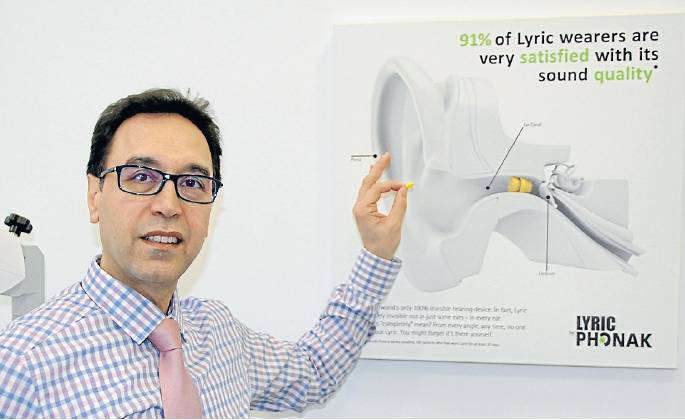Aids that adapt to the world around you
With the right care and kit, clarity of sound and speech is available.
Hearing loss is the second-most common health condition experienced by Australians. An estimated one in six people suffer from hearing loss, while three out of four people over the age of 70 require treatment for their hearing loss.
The two main causes of loss are age and noise exposure, says Dr Moh Dadafarin, director and principal audiologist for Melbourne’s Ear & Hearing Australia practice. The sooner you address your hearing difficulties, the better, he says.
“Let’s say you come to us and have hearing loss. If you need hearing aids and start using them straight away, it’s not that difficult to adjust,” he explains. “If you come back after 10 years, then it becomes harder because you haven’t been hearing certain sounds for many years. You get used to silence and become oversensitive.”
Dr Dadafarin says hearing aids can change a person’s quality of life and assist them to feel more comfortable engaging in conversation.
“[Patients] are impressed with how much better they can hear and realise what they’ve been missing once they start using hearing aids.”
Ear & Hearing Australia uses what is known as a “holistic approach” when determining the best hearing aid for a client, he says. “We don’t just look at the ears. We look at all of the other factors.”
That can include the size and shape of a patient’s external ears, their communication needs, the type of technology required, how easily a patient can manage a hearing aid and its controls, whether an aid is required in one or both ears, a patient’s cosmetic preference, and their budget.
“Hearing aids are not big and bulky any more. In most cases, people can have a discreet hearing aid or sometimes even an ‘invisible’ hearing aid,” he says.
Invisible hearing aids are fitted deep inside the ear canal. From the outside, the aid cannot be seen. Some types may only need to be replaced every two- to four months.
“One person in particular said he didn’t want to tell his partner that he was wearing a hearing aid,” Dr Dadafarin says. “So, even a partner won’t notice it. If you get close, you don’t see it. That’s what I mean by invisible.”
Hearing aid technology has also significantly improved. Dr Dadafarin says his clients are mostly concerned about the cosmetic appearance of hearing aids and the clarity of sound and speech.
“With the advances in technology, the hearing aids can overcome your hearing difficulties in every situation, including noisy environments.”
Sophisticated technology can self-adjust volume, compression, noise management and directionality depending on the person’s environment.
There has also been a rise in the use of Bluetooth technology in hearing aids.
“Hearing aids are not just hearing aids any more. They’re technology devices that people use to communicate with their phone or their music devices wirelessly,” Dr Dadafarin says.
“You can connect your hearing aids to your iPhone, iPad or computer. You can FaceTime, watch movies and listen to your messages. Everything is wireless in your ears. It’s like using headphones. Hearing aids have come of age.”
‘You can connect your hearing aids to your iPhone, iPad or computer. You can FaceTime, watch movies and listen to your messages.’
- Dr Moh Dadafarin
